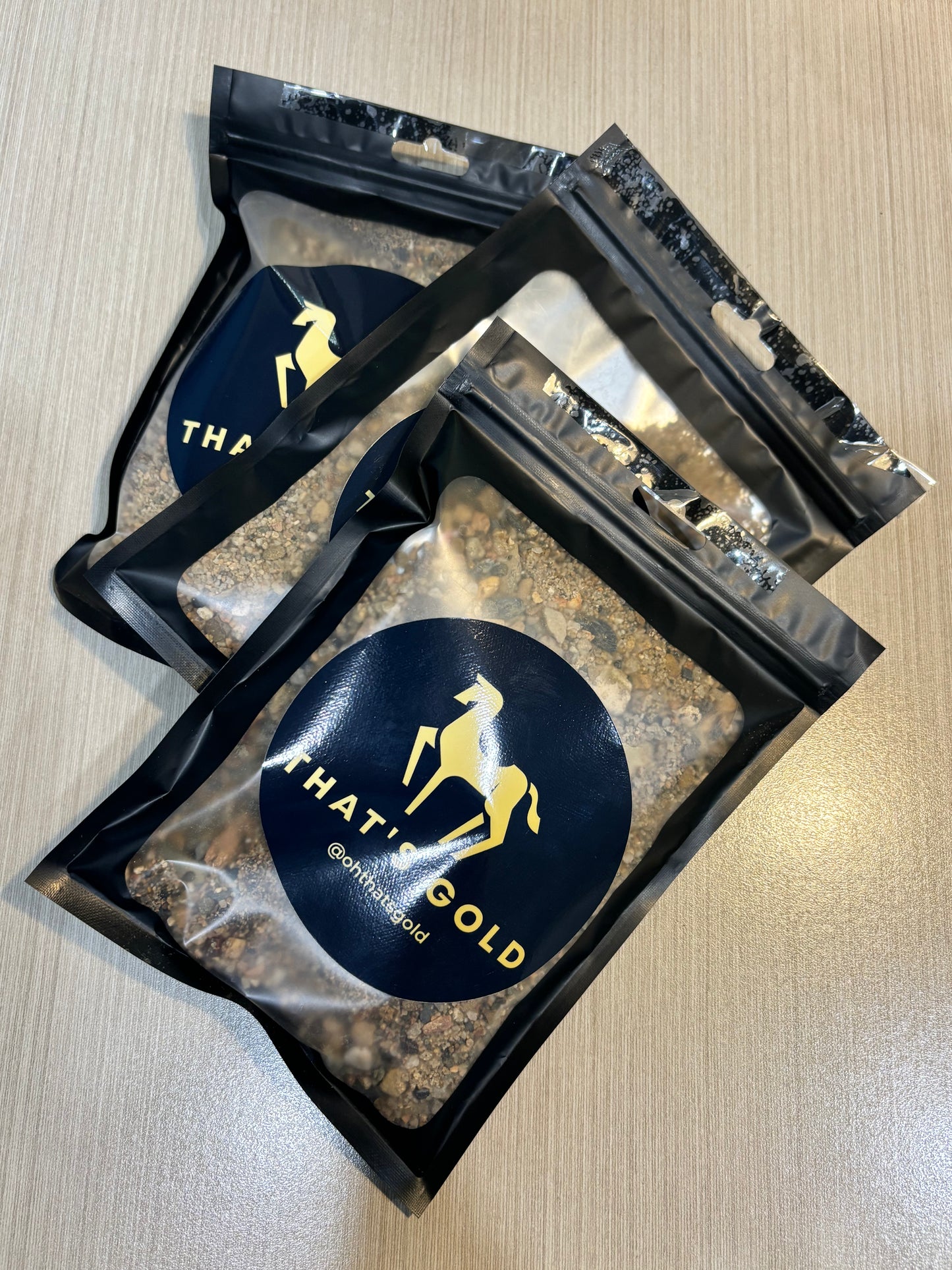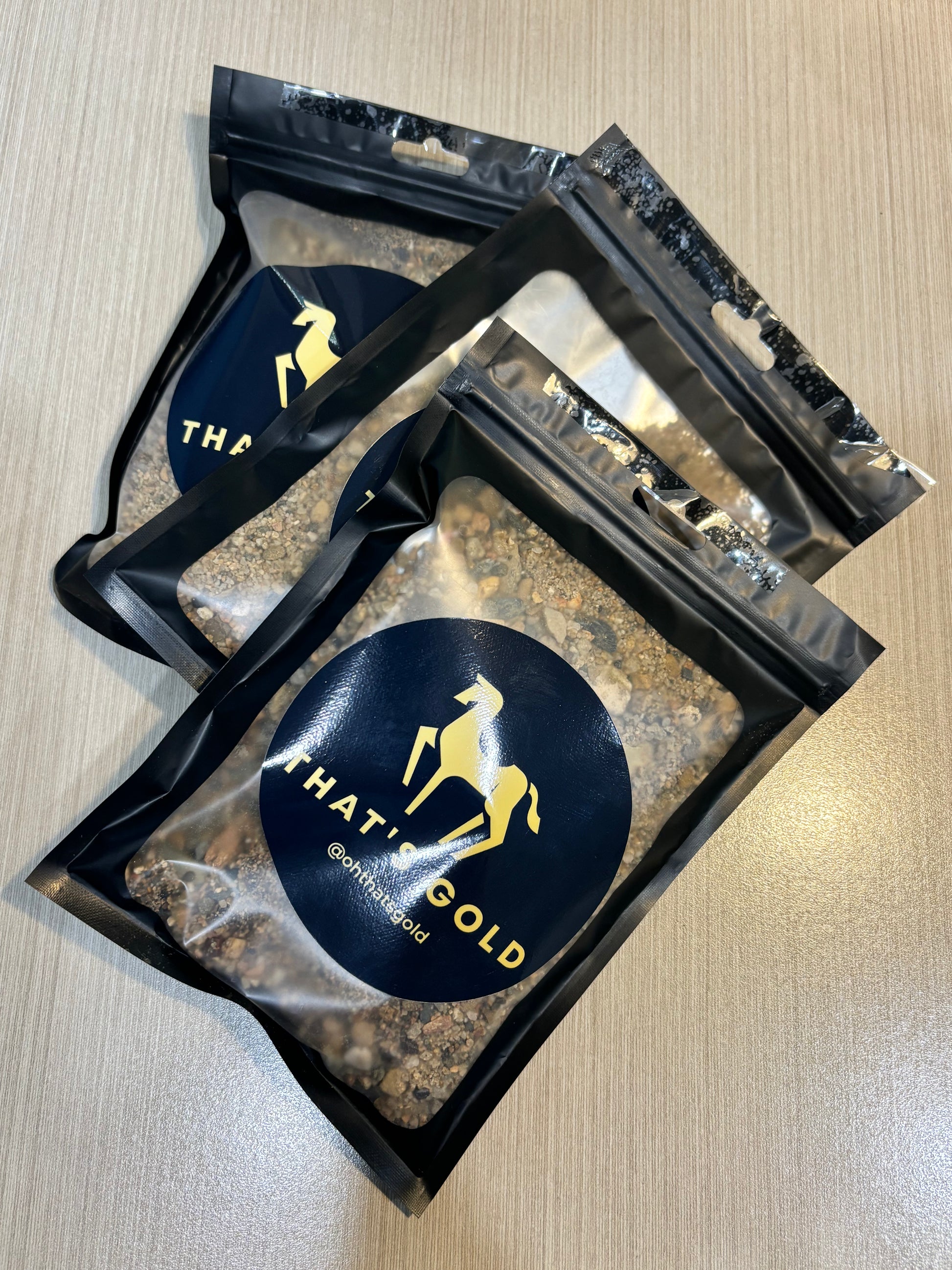Best places to prospect for gold in NSW
Location Region Notes / Highlights Google Map Link Hill End Central West NSW Iconic goldfields, good for detectors & panning https://goo.gl/maps/EcMJZLjAHFqCBpnu9 Sofala Central West NSW Historic village, gold still found in creeks https://goo.gl/maps/X2mvxknkDHmA5yEu9 Oberon Central Tablelands Popular for fossicking & camping https://goo.gl/maps/DuQ71scGnKqVztVJ9 Bathurst Central Tablelands Birthplace of Australian gold rush https://goo.gl/maps/czmUwVuJSv82 Tuena Southern Tablelands Remote area with creek panning opportunities https://goo.gl/maps/uv3VfQJjqM97MW3s5 Stuart Town Central West NSW Alluvial gold in creeks https://goo.gl/maps/L2JH8vFDFdP2 Mudgee District Central West NSW Numerous goldfields and fossicking sites https://goo.gl/maps/7PLuBK6yzxH2 Nundle North West Slopes Great spot for panning & family trips https://goo.gl/maps/L7SkBHMZasx Tumut & Adelong South West Slopes Scenic areas with productive gold creeks https://goo.gl/maps/UnABpUAMiCN2 Grenfell Central West NSW Old diggings still turning up good gold https://goo.gl/maps/9GbptuLoC1s Windeyer Central West NSW Well-known detecting & panning area https://goo.gl/maps/RAgLzFiLZj32 Araluen Southern NSW Beautiful area with fossicking potential https://goo.gl/maps/jvoGeiSdiHq
Best 3 places to gold prospect in NSW
If you’re wondering where to start your NSW gold adventure, here are my top picks. Whether you want to swing a detector, pan a creek, or just soak up a bit of gold rush history, these spots have you covered:
1️⃣ Hill End
One of the most famous gold towns in Australia. Hill End offers fantastic detecting opportunities and great camping. I’ve had some of my best days here swinging the coil!
2️⃣ Sofala
Another legendary gold rush village. The Turon River near Sofala is perfect for panning, and there are plenty of stories of modern-day prospectors still pulling good colour from this area.
3️⃣ Oberon
A popular fossicking area with easy access to creeks and rivers. Great for family trips and beginner prospectors. There’s also camping nearby, making it an easy weekend getaway spot.
G’day legends — Andrew here from That’s Gold!
If you’re itching to get out bush and chase some of that glorious yellow stuff, New South Wales is a ripper state to do it in. With a rich gold mining history and plenty of spots still producing colour today, there are more places than you might think to swing a detector or pan a creek.
Whether you’re new to prospecting or an old hand, I’ve put together this guide to some of the best places to prospect for gold in NSW. Plus, I’ll share a few handy tips to make your next trip a golden success.
👉 And if you can’t make it out to the fields right now, don’t worry — our most popular gold paydirt online brings the experience straight to your home. You can grab a bag of genuine Aussie gold paydirt here 👉 Mystery Ripper Paydirt Bundle
New South Wales holds a rich history of gold discovery, becoming a focal point for prospectors seeking their fortune. The best places to prospect for gold in NSW include the historic goldfields of the Snowy Mountains, the Central Tablelands, and the Northern Rivers region. These areas not only provide a colourful narrative of Australia’s gold rush but also offer prime locations for modern gold seekers.
Prospecting in NSW requires understanding the geological features that contribute to gold formation. By utilizing the right techniques and equipment, along with knowledge of local regulations and licencing requirements, prospectors can maximise their chances of success. Engaging with the landscape while respecting environmental considerations is crucial for sustainable gold hunting.
Key Takeaways
- Historic goldfields in NSW present prime opportunities for prospecting.
- Knowledge of regulations and techniques is vital for successful gold hunting.
- Respect for the environment enhances the prospecting experience.
The History and Importance of Gold in NSW
The history of gold in New South Wales (NSW) is marked by significant events that shaped the region's economy and society. The gold rush attracted countless prospectors, driving migration and development. Key figures and locations played pivotal roles in unfolding this rich narrative.
The Birth of the Gold Rush
The Australian gold rush began in the early 1850s, igniting immense interest in the untapped resources of NSW. Gold was first officially discovered in 1851 near Bathurst, leading to an influx of prospectors.
This period saw towns rapidly evolve into bustling communities, as people flocked to the goldfields in search of fortune. The government introduced incentives to support this booming industry, including infrastructure development.
Major goldfields such as those in Ophir and Hill End became synonymous with riches. The rush not only transformed the landscape but also the social dynamics of the area, as diverse groups converged for opportunity.
Edward Hargraves and Bathurst Region
Edward Hargraves is credited with the discovery of gold in NSW, specifically in the Bathurst region. His initial find at Ophir in 1851 prompted significant excitement and marked the beginning of extensive gold exploration.
Hargraves' efforts were instrumental as he encouraged others to prospect nearby areas. His navigation of the terrain and keen observation led to the identification of key deposits, which attracted thousands seeking wealth.
The Bathurst region flourished, with mining towns emerging and service industries developing to support the growing population. As prospectors continued to pour in, the economy of NSW transformed, forever changing its trajectory due to the gold rush.
Prospecting Licences and Legal Requirements
In New South Wales, adherence to specific legal requirements is crucial for anyone keen on prospecting for gold. Understanding the necessary licences and permits ensures a smooth and legally compliant experience.
Understanding the Miner’s Right
A Miner’s Right is essential for anyone intending to prospect in NSW. This right allows individuals to enter crown land and carry out prospecting activities.
To obtain a Miner’s Right, an applicant must:
- Be over the age of 18.
- Submit an application to the relevant authority, typically the Department of Regional NSW.
- Pay the applicable fee.
Once granted, the Miner’s Right is valid for life, provided the holder complies with the conditions outlined. It is vital to be aware that this right does not grant permission for mining operations, only for recreational prospecting.
Prospecting Permit and Regulations
In addition to a Miner’s Right, a prospecting permit may be required, particularly on certain lands. Each land type has distinct regulations surrounding prospecting activities.
A prospecting permit typically entails:
- Application through the appropriate mining authority.
- Adherence to local guidelines and regulations.
- Complying with any environmental protection measures.
Regulations may vary depending on land status, such as whether it is private or public. It's essential to verify these requirements before starting prospecting to avoid potential fines or legal issues.
By maintaining compliance with these licencing requirements, prospectors can engage in gold prospecting responsibly and effectively in NSW.
Popular Goldfields and Regions in NSW
New South Wales is rich in goldfields, with several key areas known for their historical significance and gold discovery potential. The following highlights popular regions where gold prospecting has thrived.
The Golden Triangle: Hill End and Ophir
The Golden Triangle, encompassing Hill End and Ophir, is renowned for its rich gold deposits. Hill End was the site of a major gold rush in the 1850s, leading to significant discoveries. Historic figures like Edward Hargraves claimed to have found gold here, prompting thousands to flock to the area.
Ophir, located nearby, is known as one of the first significant goldfields in Australia. The area still attracts prospectors looking for alluvial gold along the riverbanks. The unique geology presents potential for both novice and expert miners.
Historic Finds Around Bathurst and Sofala
The regions around Bathurst and Sofala are steeped in gold mining history. Bathurst, the oldest inland town in Australia, saw substantial gold discoveries in the 1850s. Techniques used in the area ranged from panning to more advanced mining methods.
Sofala, another key site, became a hub for gold seekers. It is famous for its rich alluvial gold and quartz deposits. Today, both areas offer opportunities for recreational gold prospecting, drawing enthusiasts eager to find their fortune.
Turon River and Ophir Reserve Settings
The Turon River has been a famous destination for gold prospectors since the 1850s. Its banks have yielded a variety of gold types, making it a popular spot for recreational activities. The river's potential for gold recovery attracts many who are eager to pan for gold.
The adjacent Ophir Reserve provides a protected environment where prospecting is permitted. Visitors can enjoy the scenic beauty of the area while engaging in gold panning. Both locations highlight the historical significance and ongoing allure of gold mining in NSW.
Nundle and Hanging Rock Discoveries
Nundle is a historic mining town that has seen a revival in interest among prospectors. It is situated in a picturesque valley known for its gold deposits. The town's gold mining heritage is commemorated through local museums and events.
Hanging Rock, located near Nundle, has also gained recognition for its gold-bearing quartz reefs. Prospectors frequently explore both locations, drawn by the promise of finding historic gold. These areas remain active sites for those seeking to connect with Australia's gold mining past.
Prospecting Techniques and Equipment
Effective prospecting for gold in New South Wales requires a blend of traditional and modern techniques. Each method can uncover nuggets in various terrains, utilising specific equipment tailored for optimal results.
Gold Panning and Sluicing
Gold panning is a time-honoured technique that allows prospectors to sift through gravel in rivers or streams. The process involves using a shallow pan to separate gold from sediment. The key is to swirl water in the pan, allowing gold, being denser, to settle at the bottom.
Sluicing enhances this method by using a longer device called a sluice box. As water flows through the box, gold particles are trapped in riffles or grooves while lighter materials wash away. This method is effective in areas with moderate water flow.
Prospectors often prefer these techniques for their simplicity and effectiveness, especially in historically rich goldfields in NSW.
Metal Detecting for Nuggets
Metal detecting has transformed gold prospecting, providing a more efficient way to locate nuggets buried beneath the surface. Using a metal detector, which emits electromagnetic signals, it detects metal items based on their conductivity.
Prospectors should select detectors capable of detecting small nuggets, especially in mineralised ground. Pulse induction and VLF (Very Low Frequency) are common technologies used. Understanding the terrain and adjusting settings for ground balance are essential for maximising the chances of success.
The thrill of finding a nugget can make metal detecting a rewarding activity, and many enthusiasts enjoy sharing tips and finds within the gold prospecting community.
High-Tech Prospecting with Modern Detectors
Modern metal detectors have advanced considerably, offering features like GPS, smartphone connectivity, and enhanced discrimination capabilities. These tools can differentiate between types of metals, enabling users to focus on gold specifically.
Some detectors are designed to work in various environments, from sandy beaches to rocky mountainous areas typical in parts of NSW. Many feature adjustable sensitivity settings to adapt to different soil conditions, making them versatile across locations.
Investing in quality gold prospecting equipment is crucial for serious prospectors. These devices enhance both the chances of finding gold and the overall prospecting experience. Modern technology has improved your odds of winning a little bit like getting the feature on the pokies and getting freespinz.
Geological Features and Gold Formation

The geological features of New South Wales play a crucial role in gold formation. Understanding the types of deposits can significantly enhance prospects for finding gold in the region.
Understanding Alluvial Deposits
Alluvial deposits occur when gold particles are eroded from primary sources and transported by water. They accumulate in riverbeds, creeks, and floodplains.
This process tends to create concentrated gold layers that can be exploited. Key factors influencing alluvial deposits include water flow, sediment density, and the topography of the land.
Prospectors often focus on areas with a history of gold finds, especially near former mining sites. Techniques like panning and sluicing are commonly used to extract gold from alluvial gravel.
Quartz Reefs and Hard Rock Mining
Quartz reefs represent another significant source of gold in New South Wales. These formations are typically associated with various mineralisation processes.
While quartz itself is not gold-bearing, it often acts as a host for gold, especially when found with other minerals.
Hard rock mining targets these quartz veins for extraction. Miners employ methods such as drilling and blasting to access the ore.
The geological conditions in areas like the Golden Mile demonstrate how productive quartz reefs can be. Understanding the orientation and depth of these reefs is critical for successful mining operations.
Tips and Strategies for Successful Prospecting

Successful gold prospecting requires careful preparation and knowledge. Understanding the geological landscape and identifying likely gold-bearing zones can significantly increase the chances of striking it rich.
Researching and Reading Geological Maps
Geological maps are essential tools for any serious prospector. They display various rock types and mineral deposits, providing valuable clues about where gold may be found.
Focusing on regions with a history of gold finds, such as the Hill End area, is a strategic start. Additionally, looking for structures like faults and folds in the geological formations can indicate areas where gold may be present.
The Australian Geological Survey provides resources to locate these maps online. He or she should familiarise themselves with symbols and legends used in the maps for effective interpretation.
Identifying Prospective Gold-Bearing Zones
Identifying zones that are likely to bear gold involves understanding both geological indicators and market trends. Places where ancient rivers flowed, known as “palaeochannels,” are often rich in gold deposits. Sedimentary environments, combined with volcanic rock formations, can also host gold.
Pay attention to local gold prices; higher market demand can correlate with increased exploration activity. Attending local prospecting clubs can provide insights into current hot spots as well as tips from seasoned prospectors.
Utilising metal detectors in these zones can reveal hidden treasures. Keeping a log of areas explored, findings, and observations will help refine searches.
Knowing the best places to hunt for gold includes being aware of local laws and ensuring that permissions are obtained before prospecting.
Environmental Considerations and Etiquette

When prospecting for gold in New South Wales, it's crucial to consider environmental impacts and adhere to local etiquette. Responsible practices not only protect the landscape but also foster positive relationships with the community and landowners.
Responsible Fossicking and Land Care
Gold fossickers must prioritise responsible practices to minimize environmental damage. This includes choosing areas where fossicking is allowed and obtaining necessary permits.
Key practices include:
- Minimising Disturbance: Stick to designated trails to avoid damaging native vegetation.
- Waste Management: Pack out all rubbish, including food scraps and equipment.
- Water Usage: Use water sparingly, especially in delicate ecosystems. Avoid contaminating water sources with chemicals.
Engaging in sustainable fossicking enhances the experience for everyone and ensures future access to gold prospecting sites. Respect for the land is vital in maintaining its natural beauty.
Community and Health and Safety
Consideration for the local community is essential during fossicking activities. Respect for private property and local customs fosters goodwill and cooperation.
Health and safety measures include:
- Proper Equipment: Use appropriate tools that comply with safety regulations.
- Emergency Preparedness: Carry a first-aid kit and know basic first-aid procedures.
- Communication: Inform local authorities or community groups about planned activities, especially in high-traffic areas.
Being mindful of community dynamics and safety guidelines promotes a responsible approach to gold fossicking. This consideration enhances the reputation of fossickers and reinforces the importance of maintaining healthy relationships with the locals.
Comparative Insights
Exploring the best places to prospect for gold in New South Wales requires an understanding of its standing compared to other Australian states. Key factors include historical significance, geological features, and modern mining activities.
NSW vs Other Australian States
New South Wales (NSW) holds a valuable position in Australia's gold prospecting landscape. The region has a rich mining history, with significant deposits found in areas like the Lachlan Fold Belt.
In contrast, Victoria is home to the renowned Victorian goldfields, which produced a substantial amount of Australia's historical gold yield. Its classic alluvial deposits offer rich pickings for prospectors.
Queensland presents opportunities as well, with areas like the Gympie region showing promise for both gold and other minerals.
The Northern Territory offers some unique prospects, particularly in the Pine Creek region, which is known for its alluvial and hard rock gold deposits.
Lastly, the goldfields of Western Australia are among the richest globally, showcasing large-scale operations that yield considerable amounts of gold, often overshadowing NSW.
Frequently Asked Questions
This section addresses common inquiries related to gold prospecting in New South Wales. It includes key information about prime locations, licensing requirements, historical mines, and legal regulations.
What are the prime locations for gold prospecting in New South Wales?
Some of the prime areas for gold prospecting in New South Wales include the regions around Bathurst, Hill End, and the areas surrounding the Lachlan River. The historic goldfields in the central west are particularly well-known for their rich deposits.
How can I obtain maps of NSW that indicate potential gold prospecting sites?
Prospectors can access detailed maps from the New South Wales Department of Planning and Environment. These maps show mineral titles and areas designated for prospecting, helping individuals locate potential sites.
Is a prospecting licence required in New South Wales, and if so, what is the cost?
Yes, a prospecting licence is required for gold prospecting in New South Wales. The cost of obtaining a licence can vary, so it is advisable to check the latest fees on the NSW government website.
Can you provide information on historical gold mines in NSW?
New South Wales boasts a number of historical gold mines, such as the Hill End Mine and the Sofala Goldfields. These sites not only have significant historical importance but often offer insights into the state's rich mining history.
During what times of the year is gold prospecting permitted in Australia?
Gold prospecting in Australia is generally allowed year-round. However, specific restrictions may apply during certain seasons, particularly in national parks or sensitive ecological areas.
What are the legal requirements for gold prospecting in Australia?
Prospectors must adhere to various legal requirements, including obtaining the necessary licences and permits. Additionally, respecting land ownership and environmental regulations is crucial for all prospecting activities.
Maps
Understanding the location of gold prospecting areas in New South Wales (NSW) can significantly enhance the chances of successful finds. Various resources, including geological maps and prospecting guides, highlight key regions known for gold.
Key Gold Regions in NSW
-
Lachlan Fold Belt
This area is historically rich in gold deposits, especially around towns like Orange and Bathurst. -
New England Region
Known for its mineral wealth, the New England area contains numerous gold occurrences. -
Shoalhaven River
The Shoalhaven River, particularly the Oallen Ford area, has gained recognition as a valuable gold prospecting location.
Utilizing Maps for Gold Prospecting
Maps serve as essential tools for prospectors. They can illustrate:
- Geological formations
- Historical mining sites
- Current exploration initiatives
Various online platforms offer interactive maps that display these regions. These tools can provide crucial information about the geology and mineralisation processes in the area.
For precise locations, tools such as geological surveys or local prospecting guides can be invaluable. These resources help in identifying not only the prominent regions but also lesser-known spots that could hold potential for finds.
Equipped with the right maps, prospectors can navigate NSW's gold fields with confidence, turning knowledge into successful exploration efforts.









